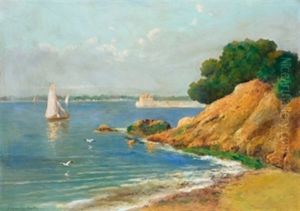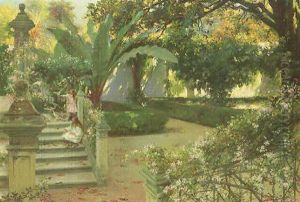Manuel Gonzalez Santos Paintings
Manuel Gonzalez Santos was a Mexican painter and muralist, born on December 17, 1897, in Monterrey, Nuevo León, Mexico. He grew up during a period of significant political and social upheaval, which included the Mexican Revolution that lasted from 1910 to 1920. These events would later influence his work, which often depicted social themes and the struggles of ordinary people.
Gonzalez Santos showed artistic talent from a young age and initially studied at the Academy of San Carlos in Mexico City. His education there allowed him to train under some of the most prominent artists of the time and exposed him to classical techniques and the burgeoning Mexican muralism movement. This movement, spearheaded by figures like Diego Rivera, José Clemente Orozco, and David Alfaro Siqueiros, aimed at creating public art that was accessible to all and often carried strong political messages.
Throughout the 1920s and 1930s, Gonzalez Santos developed his style, which combined elements of Mexican folk art with the more modern, political theme of muralism. He became known for his frescoes, which adorned public buildings and institutions. His work was part of the Mexican government's initiative to educate the masses and promote national pride through art.
In addition to his murals, Gonzalez Santos also painted canvases that depicted landscapes, still lifes, and portraits. Despite the variety in his subject matter, he is best remembered for his contribution to the muralist movement and his commitment to social issues.
Gonzalez Santos' career extended beyond painting; he also worked as a professor, imparting his knowledge and skills to the next generation of Mexican artists. His work and influence remained significant throughout his life, and he continued to paint until his later years.
Manuel Gonzalez Santos passed away in 1984, leaving behind a legacy as one of Mexico's accomplished muralists. His art remains an essential part of Mexico's cultural heritage, reflecting the country's history, struggles, and the universal human condition.







